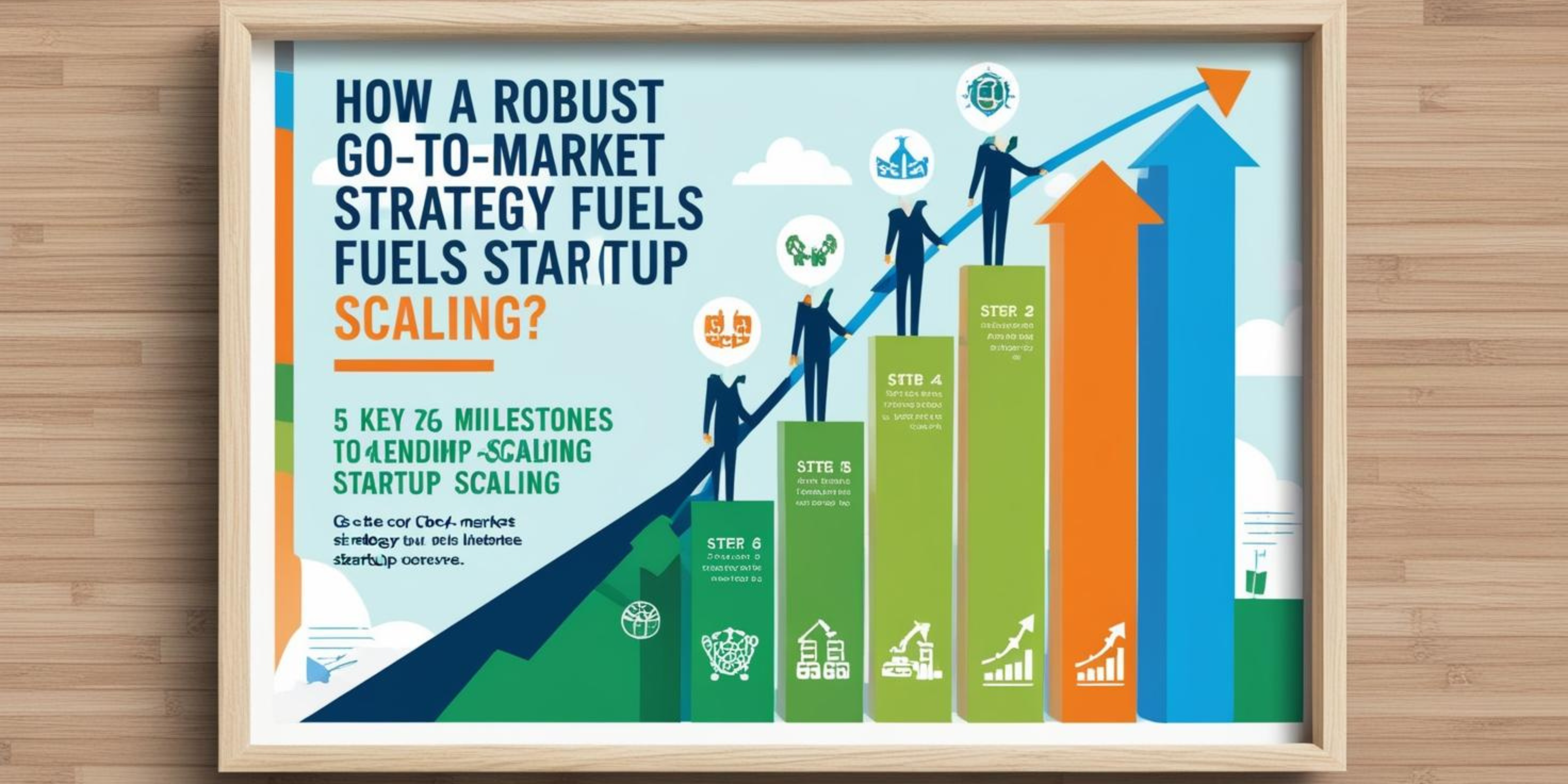How a Strong Go-To-Market Strategy Can Unlock Your Startup’s Scaling Potential 🚀
Master

Proving that your business can scale through a strong Go-To-Market (GTM) strategy involves creating and presenting a clear, data-backed plan that demonstrates how you will acquire, retain, and grow customers efficiently. Here’s a step-by-step approach to make the case effectively:
1. Define and Validate Your Target Market
• Action: Show that your business is addressing a significant market opportunity.
• How to Prove It:
• Conduct market research to define your Total Addressable Market (TAM), Serviceable Addressable Market (SAM), and Serviceable Obtainable Market (SOM).
• Use data (industry reports, competitor analysis, customer feedback) to validate the size and growth potential of your target market.
• Highlight underserved customer needs that your product addresses.
2. Articulate a Strong Value Proposition
• Action: Communicate why your product or service is unique and how it addresses customer pain points better than competitors.
• How to Prove It:
• Use testimonials, case studies, or data from pilot tests to show the tangible benefits of your offering.
• Clearly differentiate your product based on features, price, or customer experience.
• Present customer satisfaction metrics like Net Promoter Score (NPS) or retention rates.
3. Identify Scalable Sales and Marketing Channels
• Action: Demonstrate that your chosen channels can effectively and efficiently reach your target audience.
• How to Prove It:
• Highlight past campaigns or experiments showing success through specific channels (e.g., digital ads, partnerships, or influencer marketing).
• Present channel metrics such as Customer Acquisition Cost (CAC), conversion rates, and Return on Ad Spend (ROAS).
• Explain how these channels can scale without a proportional increase in costs.
4. Showcase a Repeatable Sales Process
• Action: Establish that your sales process can consistently convert leads into paying customers.
• How to Prove It:
• Break down your sales funnel: lead generation, qualification, nurturing, closing, and onboarding.
• Provide metrics like conversion rates, average deal size, and sales cycle length to demonstrate efficiency.
• Use tools like CRMs or sales automation platforms to show scalability and efficiency improvements.
5. Optimize Cost Per Acquisition (CAC) and Customer Lifetime Value (CLV)
• Action: Prove that your customer acquisition costs are manageable and that customers provide long-term value.
• How to Prove It:
• Present a favorable CLV-to-CAC ratio (typically > 3:1 is sustainable).
• Show how reducing CAC through improved targeting, partnerships, or automation can lead to greater scalability.
• Highlight retention strategies that increase CLV, such as upselling, cross-selling, or subscription models.
6. Highlight Partnerships and Ecosystem Leverage
• Action: Demonstrate how strategic alliances or partnerships can accelerate your GTM efforts.
• How to Prove It:
• Showcase existing or potential partnerships that amplify distribution or credibility.
• Provide data or examples of how such partnerships have worked for similar businesses.
• Highlight your network or ecosystem’s ability to expand reach without significant capital investment.
7. Use Predictive Financial Modeling
• Action: Prove that your GTM strategy leads to sustainable growth with sound financial projections.
• How to Prove It:
• Create a financial model projecting revenue growth, costs, and profitability.
• Include best-case, worst-case, and realistic scenarios to build confidence.
• Demonstrate how revenue and margins improve as your sales volume increases.
8. Demonstrate Product-Market Fit
• Action: Show that your product or service has already gained traction with its target audience.
• How to Prove It:
• Provide metrics like retention rates, churn rates, and repeat purchases.
• Use early adopters or case studies as proof that your product meets a real need.
• Highlight organic growth signals such as word-of-mouth referrals or user-generated content.
9. Incorporate Technology and Automation
• Action: Prove scalability by leveraging technology to reduce manual effort and increase efficiency.
• How to Prove It:
• Showcase tools like marketing automation platforms, CRM systems, or AI-driven analytics that streamline operations.
• Present cost savings or efficiency gains from automation.
• Demonstrate how these tools scale with increasing customer volume.
10. Present a Clear Execution Plan
• Action: Demonstrate that you have a structured, actionable GTM strategy.
• How to Prove It:
• Include a timeline for key milestones (e.g., product launch, sales ramp-up, new market entry).
• Allocate resources and responsibilities clearly across teams.
• Include KPIs (Key Performance Indicators) to track progress and ensure accountability.
Prove It With Real-World Metrics
• Pilot Results: Show data from a small-scale rollout or test campaign.
• Early Revenue Traction: Highlight sales growth trends or recurring revenue from initial customers.
• Investor Confidence: Share endorsements from investors or advisors who back your GTM strategy.
• Competitor Analysis: Prove your GTM plan addresses gaps competitors haven’t filled.
Summary
To prove that a strong GTM strategy can scale your business:
1. Use data to validate your market and audience.
2. Demonstrate repeatable, efficient processes for sales and marketing.
3. Present a clear execution plan with scalable channels and technologies.
4. Back your claims with real-world metrics, case studies, and financial projections.
By showing how your strategy leads to predictable and sustainable growth, you’ll convince stakeholders that scaling your business is not just possible—it’s inevitable.